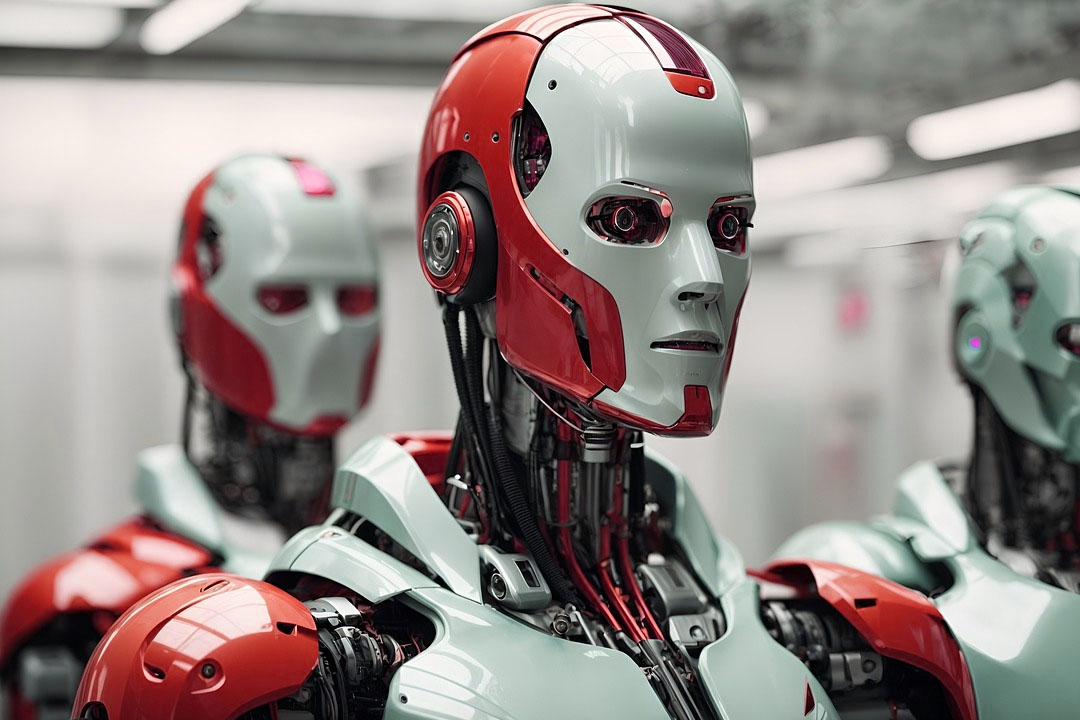Introduction:
Robotics the interdisciplinary field that combines computer science mechanical engineering and electrical engineering has emerged as a transformative force in modern society. The integration of intelligent machines into various aspects of our lives has led to significant advancements in automation manufacturing healthcare and beyond. As we stand at the cusp of a new era it is essential to explore the multifaceted impact of robotics on our world.
- Evolution of Robotics:
The roots of robotics can be traced back to ancient times with early automata and mechanical devices serving as primitive predecessors. However it wasn’t until the 20th century that significant strides were made culminating in the birth of modern robotics. The advent of programmable computers in the mid 20th century paved the way for the development of more sophisticated robots capable of performing complex tasks with precision and efficiency.
- Industrial Robotics:
One of the most visible and impactful applications of robotics is in the realm of industry. Industrial robots have revolutionized manufacturing processes enhancing productivity and product quality. These machines equipped with advanced sensors and programming can handle repetitive and dangerous tasks with unparalleled accuracy. From automotive assembly lines to electronics manufacturing robots have become indispensable in streamlining production and reducing human exposure to hazardous conditions.
- Collaborative Robots (Cobots):
In recent years there has been a paradigm shift towards collaborative robots or cobots. Unlike their traditional counterparts cobots are designed to work alongside humans fostering a harmonious collaboration between man and machine. This development is particularly evident in industries like healthcare where cobots assist surgeons in delicate procedures or in warehouses where they collaborate with human workers to optimize logistics.
- Service Robotics:
Beyond the confines of factories robots are making their presence felt in our daily lives through service robotics. Robotic vacuum cleaners personal assistants like Amazon Alexa and automated customer service representatives are just a few examples of how robots are becoming integral parts of households and businesses. These machines leverage artificial intelligence to understand and respond to human commands marking a significant leap in human robot interaction.
- Medical Robotics:
The healthcare sector has witnessed a revolution with the advent of medical robotics. Robots are now employed in surgeries, diagnostics, and rehabilitation, augmenting the capabilities of medical professionals. Surgical robots, for instance, enable minimally invasive procedures with greater precision, reducing recovery times and improving patient outcomes. Robotic exoskeletons aid in rehabilitation, offering mobility solutions to individuals with physical disabilities.
- Educational and Research Robotics:
Robotics plays a pivotal role in education, providing hands-on learning experiences that foster STEM (Science, Technology, Engineering, and Mathematics) skills. Educational robots, ranging from simple programmable toys to advanced kits, engage students in the principles of coding and engineering. In research, robots are used to explore hazardous environments, such as deep-sea exploration or space missions, where human presence is challenging or impossible.
- Challenges and Ethical Considerations:
While robotics holds immense promise, it also presents challenges and ethical considerations. The fear of job displacement due to automation is a pressing concern, necessitating the development of policies and strategies to manage the transition. Additionally, ethical questions surrounding the use of robots in military applications, privacy concerns related to surveillance robots, and the potential misuse of advanced AI in autonomous systems require careful consideration and regulation.
- The Future of Robotics:
Looking ahead, the future of robotics is characterized by continuous innovation and integration into diverse fields. Advancements in artificial intelligence, machine learning, and sensor technologies will drive the development of more intelligent and adaptive robots. The concept of swarm robotics, where multiple robots collaborate to achieve a common goal, holds promise for applications in search and rescue, environmental monitoring, and agriculture.
Conclusion:
Robotics, as a field of study and application, is redefining the way we live and work. From the automation of industrial processes to the integration of robots into our homes and hospitals, the impact of robotics is profound. As we navigate the evolving landscape of intelligent machines, it is crucial to strike a balance between technological advancement and ethical considerations, ensuring that robotics continues to enhance human well-being and productivity. The journey of robotics is an exciting one, promising a future where intelligent machines contribute to a safer, more efficient, and interconnected world.













